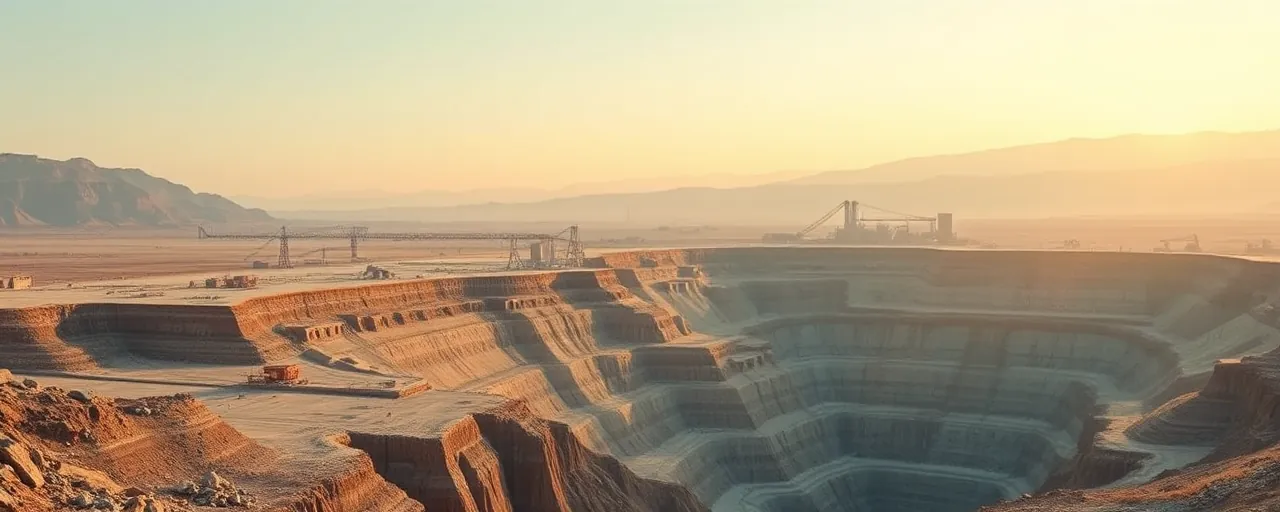A Fragile Lifeline
The United States faces a growing challenge in securing the critical minerals that power its economy and defense systems. From lithium in electric vehicle batteries to rare earth elements in missile guidance systems, these materials are the backbone of modern technology and military might. Yet, the nation relies heavily on foreign suppliers, a dependency that has sparked concern among policymakers and industry leaders alike.
On April 15, 2025, the White House issued an executive order directing the Secretary of Commerce to investigate whether imports of processed critical minerals and their derivative products pose a threat to national security. The move reflects unease about global supply chain vulnerabilities, particularly the influence of a few dominant foreign producers. This investigation, authorized under Section 232 of the Trade Expansion Act of 1962, aims to assess risks and propose solutions to safeguard U.S. interests.
The stakes are high. Critical minerals underpin industries from telecommunications to renewable energy, and any disruption could ripple across the economy. The investigation signals a broader push to address supply chain fragility, a concern amplified by recent geopolitical tensions and market distortions.
For everyday Americans, the issue might seem distant, but its impact is tangible. A shortage of these minerals could drive up costs for everything from smartphones to electric vehicles, while defense vulnerabilities could compromise national safety. The question now is whether the U.S. can reduce its reliance on foreign sources without sparking new economic challenges.
The Risks of Reliance
The U.S. imports a significant portion of its critical minerals, such as lithium, cobalt, and rare earth elements, from a handful of countries. China, which dominates global processing, controls over 60% of lithium refining and 85% of rare earth processing. This concentration creates vulnerabilities, as supply disruptions from geopolitical conflicts, natural disasters, or trade disputes could choke off access to these essential materials.
Historical examples highlight the danger. In 2010, China briefly halted rare earth exports to Japan during a diplomatic spat, causing global prices to soar and exposing the fragility of supply chains. More recently, China’s export controls on materials like gallium and graphite, critical for semiconductors and defense systems, have targeted U.S. industries, raising alarms about economic and military readiness.
Beyond geopolitics, market manipulation adds another layer of risk. Dominant producers can flood markets with low-priced minerals, undercutting competitors and discouraging investment in new projects. When prices spike due to export restrictions, manufacturers face higher costs, which often pass through to consumers. The International Energy Agency has warned that the opaque nature of these markets makes them prone to such distortions, threatening long-term supply stability.
The investigation will examine these dynamics, focusing on the distortive practices of foreign producers and their impact on U.S. industries. It will also assess the nation’s capacity to process minerals domestically, a critical step toward reducing dependence on volatile global markets.
Balancing Act: Solutions and Trade-Offs
To address these risks, the U.S. is exploring a range of strategies, from tariffs and import restrictions to incentives for domestic production. The executive order tasks the Commerce Department with evaluating tariffs as a tool to protect U.S. industries, alongside policies to boost mining, processing, and recycling at home. Partnerships with allies like Canada and Australia are also on the table to diversify supply sources.
However, these measures come with trade-offs. Tariffs could shield domestic producers but risk raising costs for manufacturers reliant on imported minerals, potentially increasing prices for consumers. Retaliatory trade actions, like China’s recent export bans, could further disrupt supplies. Meanwhile, expanding domestic production faces hurdles, including lengthy permitting processes and environmental concerns. Building new mines or processing facilities can take 7-10 years in the U.S., compared to 2-3 years in some competitor nations.
Voices from industry and policy circles reflect the complexity. Manufacturers argue for stable, affordable access to minerals, warning that trade barriers could harm their competitiveness. Mining advocates, on the other hand, call for streamlined regulations to unlock domestic resources, citing job creation and economic benefits. Environmental groups urge caution, emphasizing the need for sustainable practices to avoid long-term ecological damage.
The investigation’s findings, due within 180 days, will shape the path forward. Policymakers must weigh the need for security against the economic and environmental costs, a delicate balance that will define the U.S. approach to critical minerals for years to come.
Looking Ahead
The U.S. effort to secure critical minerals is part of a broader global race to control the resources that will power the future. As demand for clean energy, advanced technology, and defense systems grows, so does the urgency to build resilient supply chains. The Commerce Department’s investigation is a step toward understanding the scope of the challenge and crafting targeted solutions.
For now, the nation remains at a crossroads. Reducing reliance on foreign minerals will require investment, innovation, and international cooperation, all while navigating economic pressures and geopolitical realities. The outcome will not only shape U.S. security and prosperity but also influence the daily lives of Americans, from the cost of their cars to the strength of their national defense.
